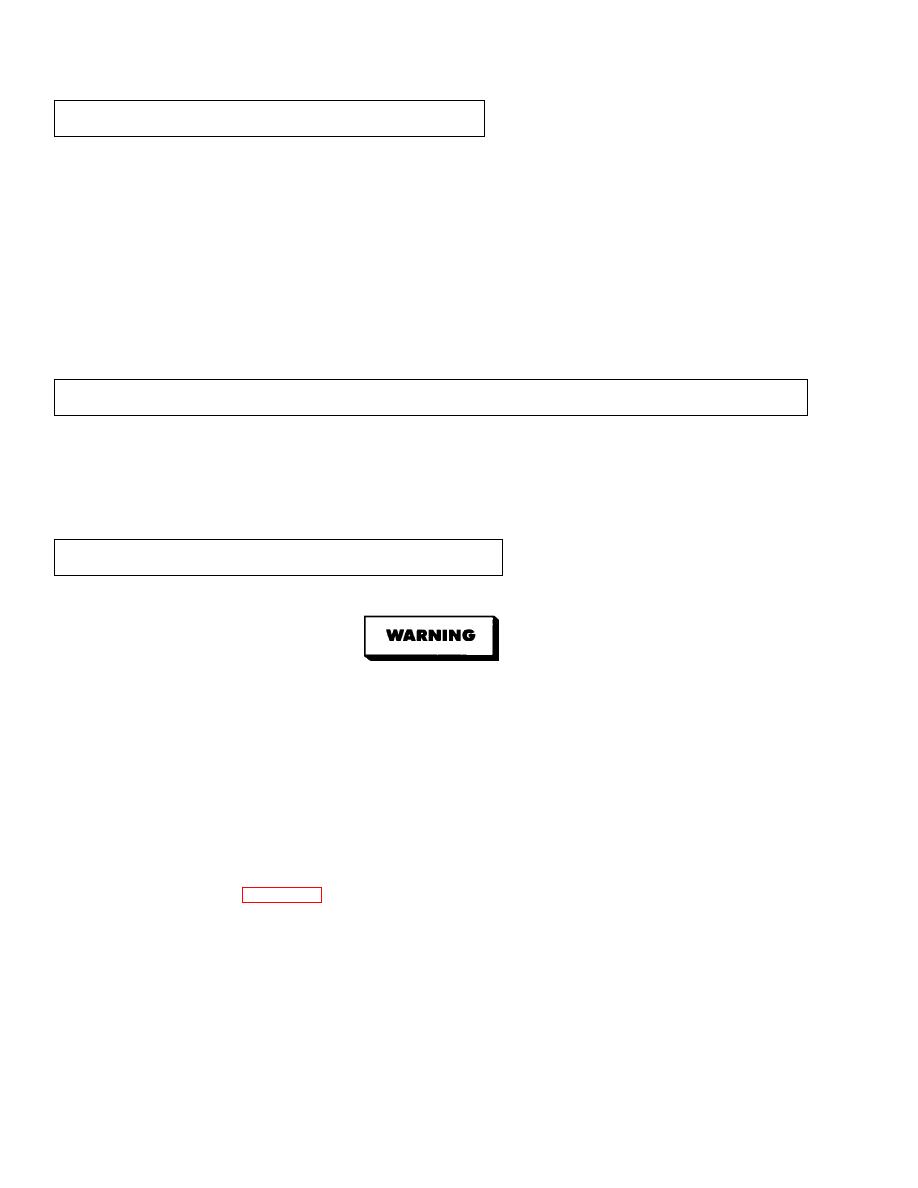 |
|||
|
|
|||
|
Page Title:
PREVENTIVE MAINTENANCE CHECKS AND SERVICES (PMCS) |
|
||
| ||||||||||
|
|
 TM 9-2320-364-20-1
2-6. SERVICE BEFORE OPERATION (CONT).
(11)
Fuel System Inspection.
(a)
Check fuel level and replenish, if necessary.
(b)
Inspect fuel hoses, tubes, connections and filters for evidence of leakage.
(12)
Arctic Kit. If truck is equipped with an arctic kit, and is going to operate in non-arctic climates, remove
arctic alternator belts and replace with standard belts.
Section III. PREVENTIVE MAINTENANCE CHECKS AND SERVICES (PMCS)
This section contains Unit Maintenance PMCS requirements for the truck. The PMCS tables contain checks and
services necessary to ensure the truck is ready for operation. Using the PMCS tables, perform maintenance at the
specified intervals. Perform preventive maintenance checks and services in TM 9-2320-364-10 before doing the Unit
preventive maintenance.
Drycleaning Solvent (P-D-680) is TOXIC and flammable. Wear protective goggles, face
shield, and gloves; use only in a well-ventilated area; avoid contact with skin, eyes, and
clothes, and do not breathe vapors. Keep away from heat or flame. Never smoke when
using solvent. The flashpoint for Type II Drycleaning Solvent is 140 degrees F (60 degrees
C) and Type III Drycleaning Solvent is 200 degrees F (93 degrees C). Failure to do so may
result in injury or death to personnel.
If personnel become dizzy while using cleaning solvent, immediately get fresh air and
medical help. If solvent contacts skin or clothes, flush with cold water. If solvent contacts
eyes, immediately flush eyes with water and get immediate medical attention.
a. Cleanliness. Dirt, grease, oil and debris only get in the way and may cover up a serious problem. Use
drycleaning solvent (Item 87, Appendix C) on metal surfaces and soapy water on rubber.
b. Bolts, Nuts and Screws. Check bolts, nuts and screws for obvious looseness, missing, bent or broken
condition and tighten or replace as necessary. If they cannot be checked with a tool, look for chipped paint, bare metal
or rust around bolt heads.
c. Welds. Look for loose or chipped paint, rust or gaps where parts are welded together. If a bad weld is found,
notify the supervisor.
d. Electric Wires and Connectors. Look for cracked or broken insulation, bare wires and loose or broken
connectors. Tighten loose connectors and make sure the wires are in good shape.
|
|
Privacy Statement - Press Release - Copyright Information. - Contact Us |